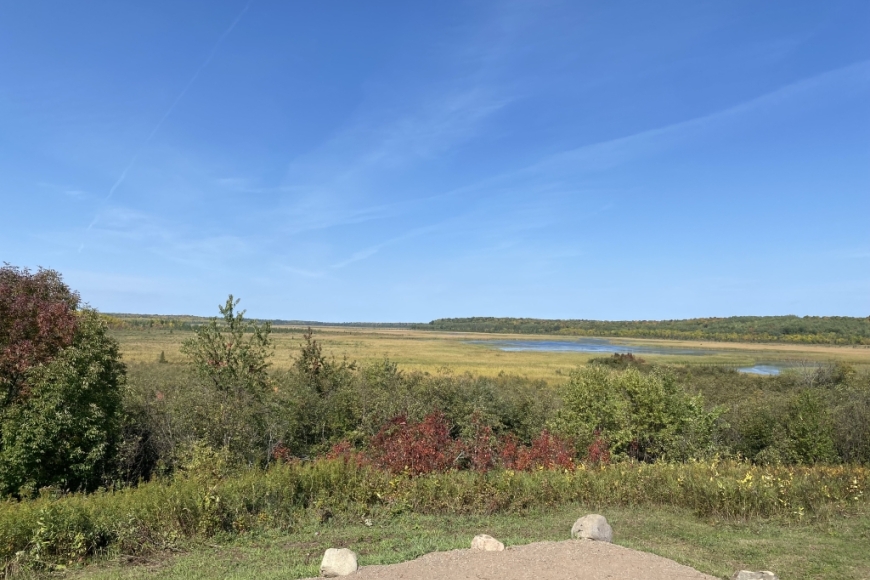Totogatic Wildlife Area
Tucked into the northwest corner of Sawyer County, just north of Hayward, Wisconsin, lies the Totogatic Wildlife Area. The property is extremely diverse in habitat with slow-moving water, marshes and bogs, wet sedge meadows and managed upland forests. An elevated parking lot on the southeast property corner off of State Highway 27 provides an overlook of the flowage and adjoining uplands.
Acquisition of Totogatic Wildlife Area began in 1941 and was completed in 1951. Today, the property covers 2,719 acres. This project was funded originally through the Pittman-Robertson Act as a waterfowl restoration area. A 600-foot dike and 70-foot dam were completed in 1953, flooding approximately 1,000 acres with about 400 acres of open water. Fifteen miles of roads were constructed on the property to improve access and provide fire breaks.
The majority of the southern, northern and portions of the eastern boundary adjoin Sawyer County Forest, with the entire western boundary being Washburn County Forest. The Sawyer County Forest portion to the south contains a wildlife Habitat Management Area, including rotational aspen management and increased recreational access.
Management Objectives
A 35-acre impoundment was created on the south edge of the property in 1956 to improve muskrat habitat, and nesting islands were created here for waterfowl. Active timber management provides a diverse forest with a focus on quality wildlife habitat. The flowage is now used for fishing than waterfowl hunting and is a popular place in spring and fall for viewing migrating waterfowl. Osprey nesting platforms have been placed throughout the property. Fishing opportunities include pike, bass and occasional walleye, which are mostly fish that have moved downstream from Nelson Lake.
A mixture of aspen, northern hardwood and swamp hardwoods make up diverse forested stands. Active timber management continues on the property today using modern silviculture practices with a focus on quality wildlife habitat for both game and non-game species. Management includes a multi-aged class structure aspen, with a focus on young successional habitat on the fringes of the flowage. Prescribed fire is implemented to control cattail establishment and maintain a grass, brush and young forest transition zone between the established forested stands and the wet ground. Throughout the property, a network of rustic trails connects maintained wildlife openings complexes providing forage and cover for wildlife in the forested stands, as well as waterfowl nesting cover near the edges of the flowage.
Presently, the property is managed for wildlife recreational activities and to provide wildlife habitat. For more information on master planning for this and other wildlife areas around the state, visit the Property Planning page.
Recreation
The Totogatic Wildlife Area offers many recreational opportunities including:
- Biking
- Birding
- Canoeing
- Cross-country skiing (no designated trail)
- Fishing
- Hiking (no designated trail)
- Hunting
- Snowmobiling trail
- Swimming
- Trapping
- Wild edibles/gathering
- Wildlife viewing
- Other:
- There are two rustic boat landings at the Nelson Lake Dam (town of Lenroot, non-DNR) and Duck Pond Road at the DNR Totogatic Dam.
- There are no open motorized vehicle trails, but Lenroot (Sawyer) and Frog Creek (Washburn) townships do allow the operation of ATV and UTV motorized vehicles on Duck Pond Road. The town road crosses the northwest corner of the Totogatic Wildlife Area.
Amenities
- Bathroom - none.
- Parking lot - there are four parking lots throughout the property.
- Campground and size - none.
- Trails, Types and Lengths - non-designated trails only.
Maps
Download [PDF] a map of this property.
If you are interested in exploring this property further, you can access an interactive map.
Find out more about how to adopt this wildlife area.


